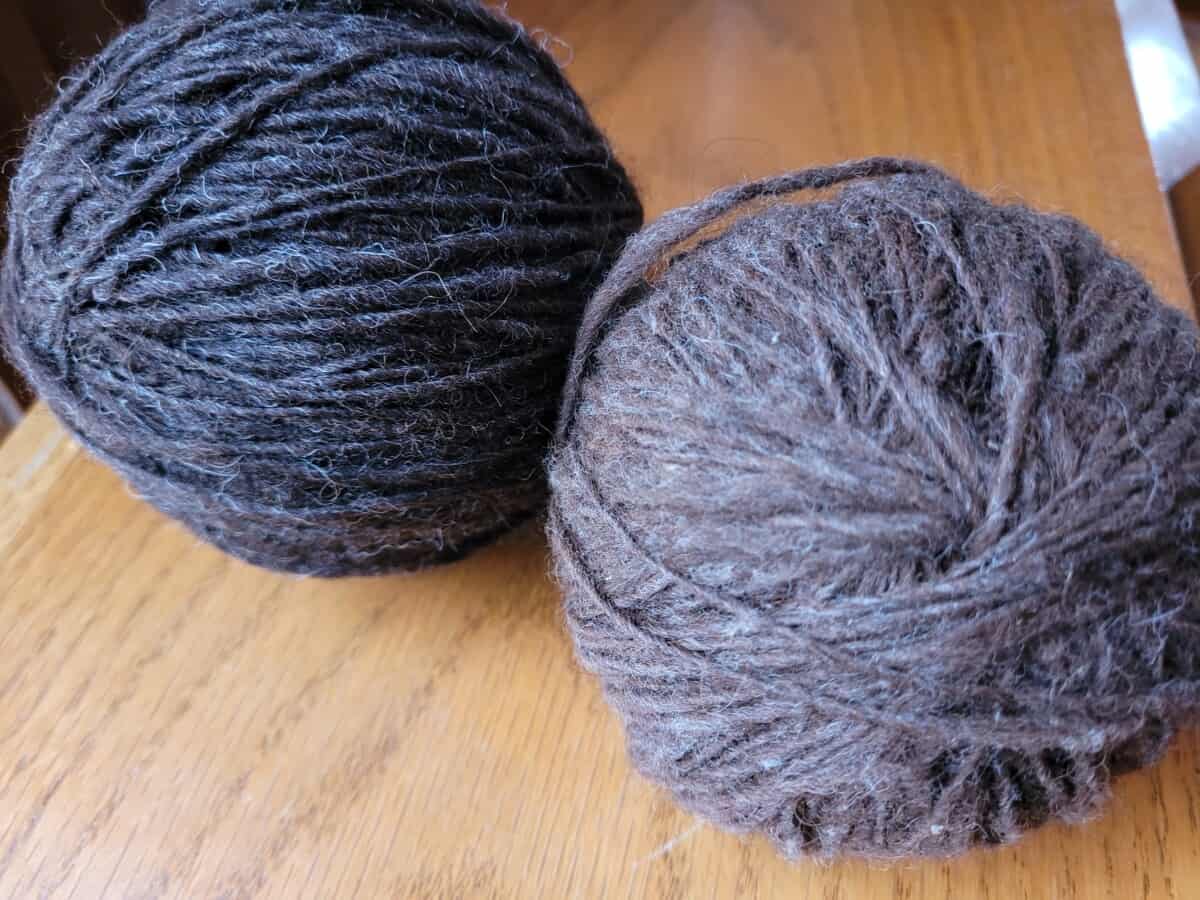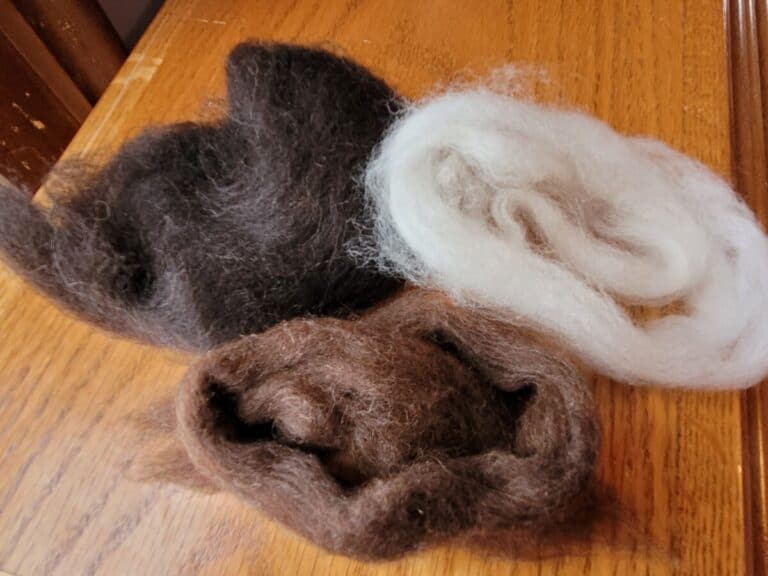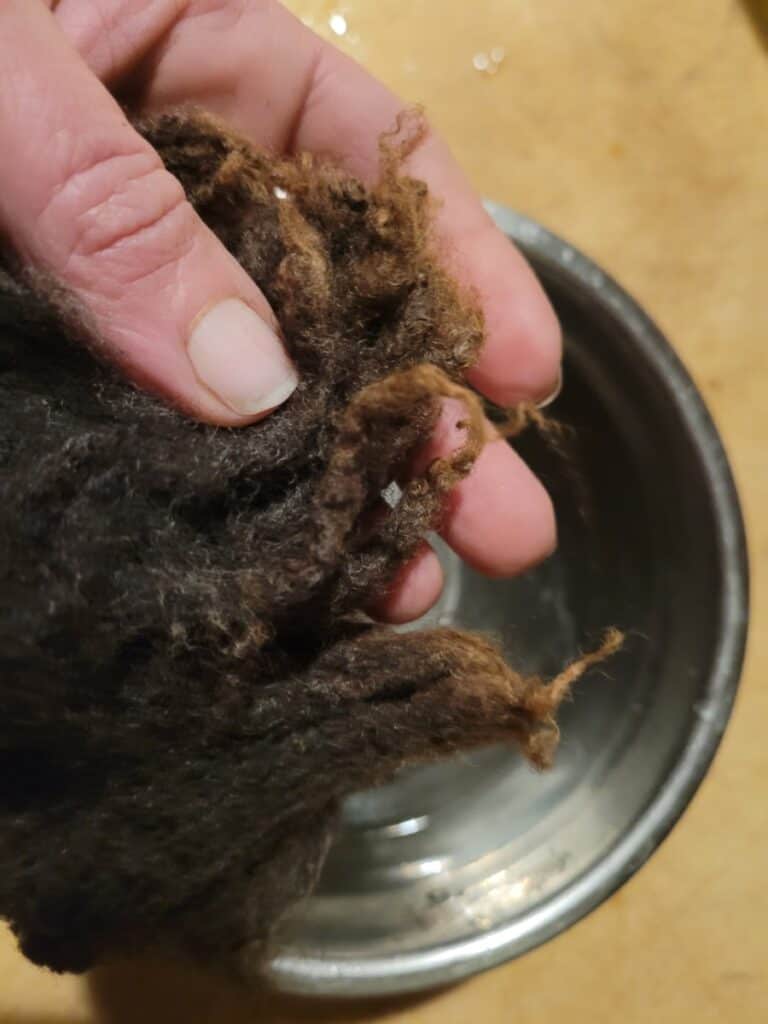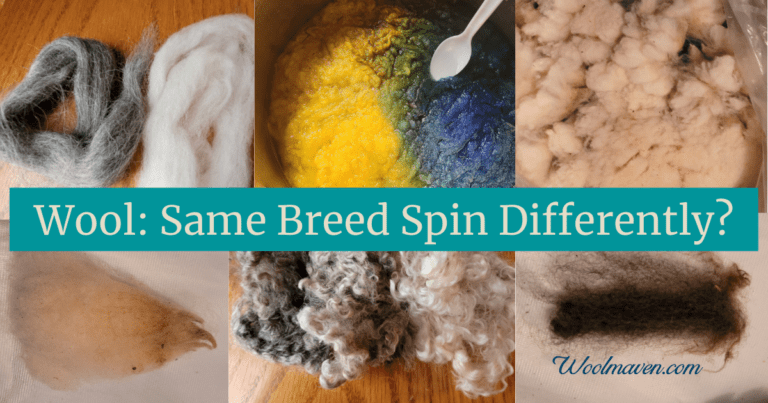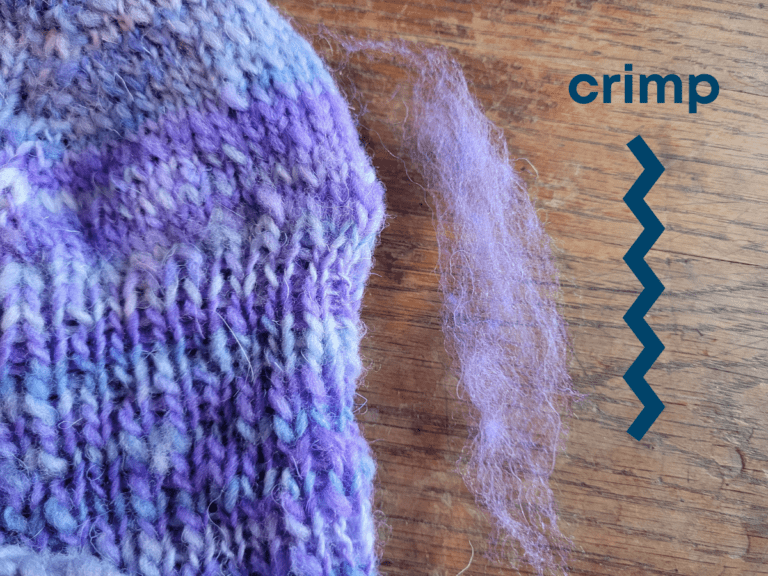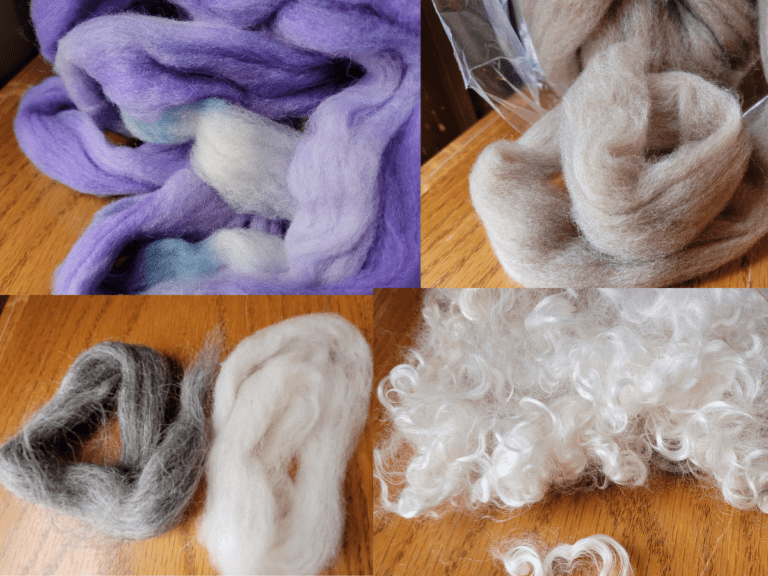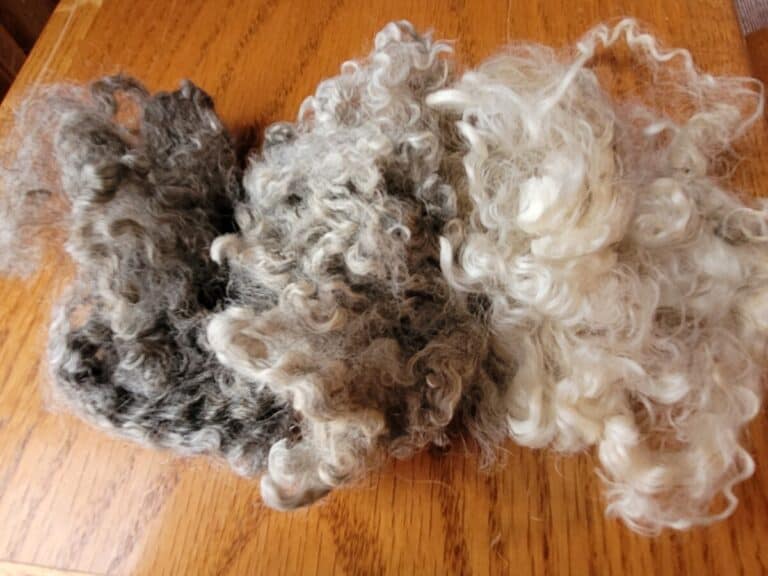9 Beginner Friendly Wools To Spin
Looking for some easy to work with wool but confused with all of the choices?
No worries, we’ll go over some easy to spin, beginner friendly wools that will be fun to work with, yet manageable for the new handspinner.
Best Places To Get Wool For Handspinning gives you a list of options for your spinning fiber, including wide selections, size options and best prices.
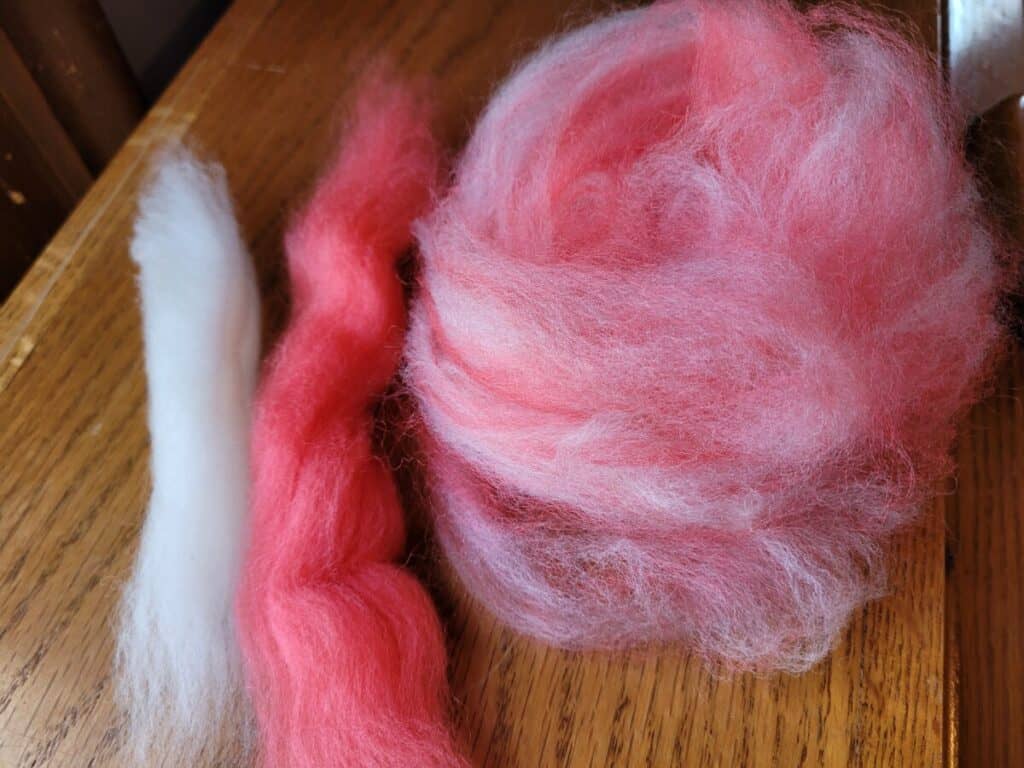
This post contains affiliate links, which means I receive commissions if you choose to purchase through links I provide (at no extra cost to you).
Corriedale tops the “Easy to spin” list
Corriedale is one of the classic beginner friendly wools.
If you are wondering about where to start, order up some Corriedale top or roving (this is from The Woolery, 8.8 ounces for less than $20) and get started!
Seriously, don’t go any further down the list if you want the most versatile and forgiving wool for you to start with.
Corriedale has nice staple length and a bit of grip, so it won’t just slide right out of your fingers!
Get some Corriedale, get comfortable with your spinning, then consider branching out, or just do more with the Corriedale!
The rest of the wools on the list are also easy to work with once you are starting to get a feel for spinning, until then stick to Corriedale.
Roving vs Combed Top goes over the differences between the two and helps you figure out when to use one over the other for your projects.
Romney wool has good length
Romney is beginner friendly.
You should know that there are a two different types of Romney, the Kent Romney is softer, the other is longer stapled. I have the longer stapled Romney.
This is the reason why I list Corriedale as my top fiber for beginners rather than Romney, the potential confusion over short vs long fibers.
If you feel that Romney is a better choice for you, get some, it is a solid beginner friendly wool.
I love how Romney has longer fibers and is a bit shiny. Not so shiny that it is slick and slipping out of your hand, of course, but it has just enough luster to look polished.
I knitted up a little swatch (practice square) and liked how easy it was to work with and the stitch definition that the yarn has.
It has less elasticity than I was guessing, so you don’t get too much stretch on your needles, but overall, nice!
Polwarth is longer and finer
Polwarth is a bit finer of a wool than most here, with the exception of the Merino, and is a great choice for more of an advanced beginner, once you are comfortable with your wheel.
The Polwarth I have is dreamy to spin and I love working with it, but would have been too fine for me when I was starting out.
The length would have been great, it’s just the fineness, I would have needed to work up to Polwarth from a medium wool. Once you are comfortable with your wheel, try Polwarth, you’ll be glad you did!
Lincoln has luster
A few years ago I got a Lincoln lamb fleece, it was a lovely grey. Since it was a lamb fleece, it was a bit shorter than you would expect of this wool, normally, but it was great to work with.
The fleece I got was super easy to spin and knitted up nicely. I really enjoyed working with this one! I remember that I just kept spinning it. Not to get more yarn, just to spin, since the wool was so easy to work with.
I do have to emphasize that I got a lamb fleece, not a mature fleece, so I can’t speak to how well mature Lincoln would work for a beginner.
Shetland is soft and versatile
Shetland is easy to work with, very versatile and makes a wonderful yarn. I love spinning Shetland and can be confident that when I get one of these fleeces, I’ll have a wonderful time working with it.
Of course, you get a huge variety of natural colors to choose from with Shetland, this is always a plus for me. Here are the four colors of Shetland available at The Woolery.
Shetland is easy to knit with and, if you are interested, Shetland felts well, too.
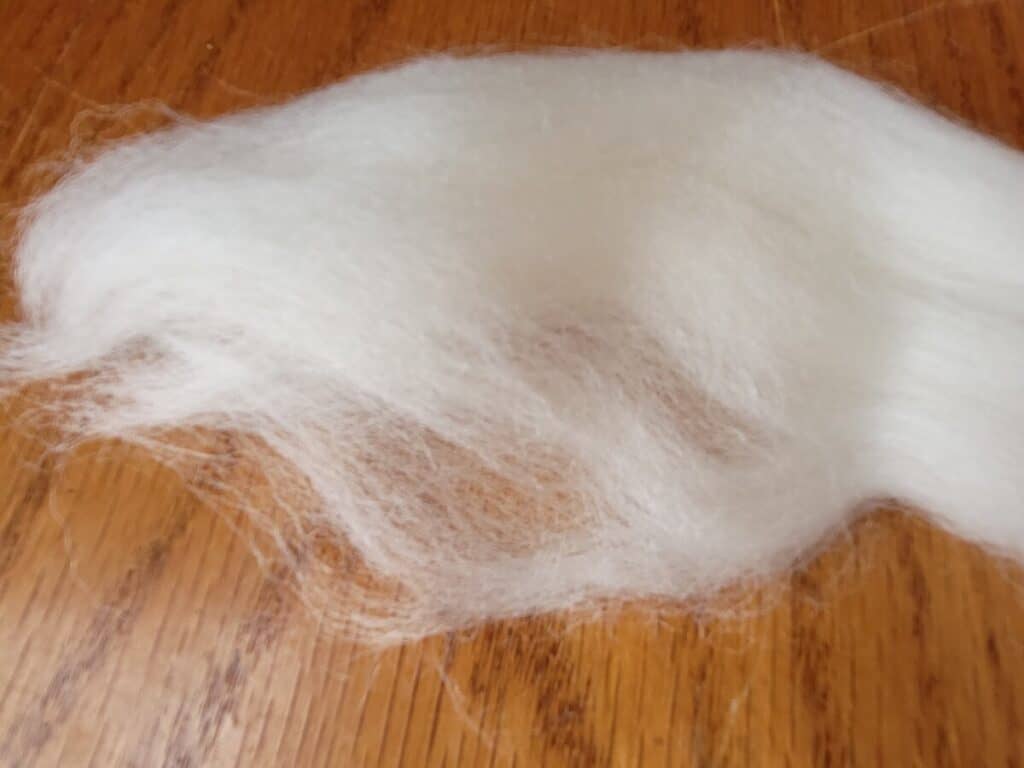
Blue Faced Leicester has shine
Blue Faced Leicester (BFL) is a wonderful fiber with a lot of luster, meaning it is a bit too slippery for a beginner.
Unless, of course, you are using a spindle, then BFL is the ticket!
I enjoy spinning it and love knitting with the yarn, but I consider it to be more of a branching out/try new things fiber for someone ready to expand their spinning experience as a middle level beginner, not for someone totally new.
Don’t get me wrong, you’ll get to BFL pretty quickly, I’d just start somewhere else, first. Once you are more comfortable with the wheel, definitely circle back to this one!
Black Welsh Mountain is easy to work with
I just got in an order of new to me fibers to try and so far Black Welsh Mountain is pleasantly easy to spin and work with. It also seems to be very springy.
This wool is also fun to work with for knitting, I love the rich color!
About the only potential negative here is that the wool is so dark, it can be hard to see where to put the needles, so be sure to work in good lighting.
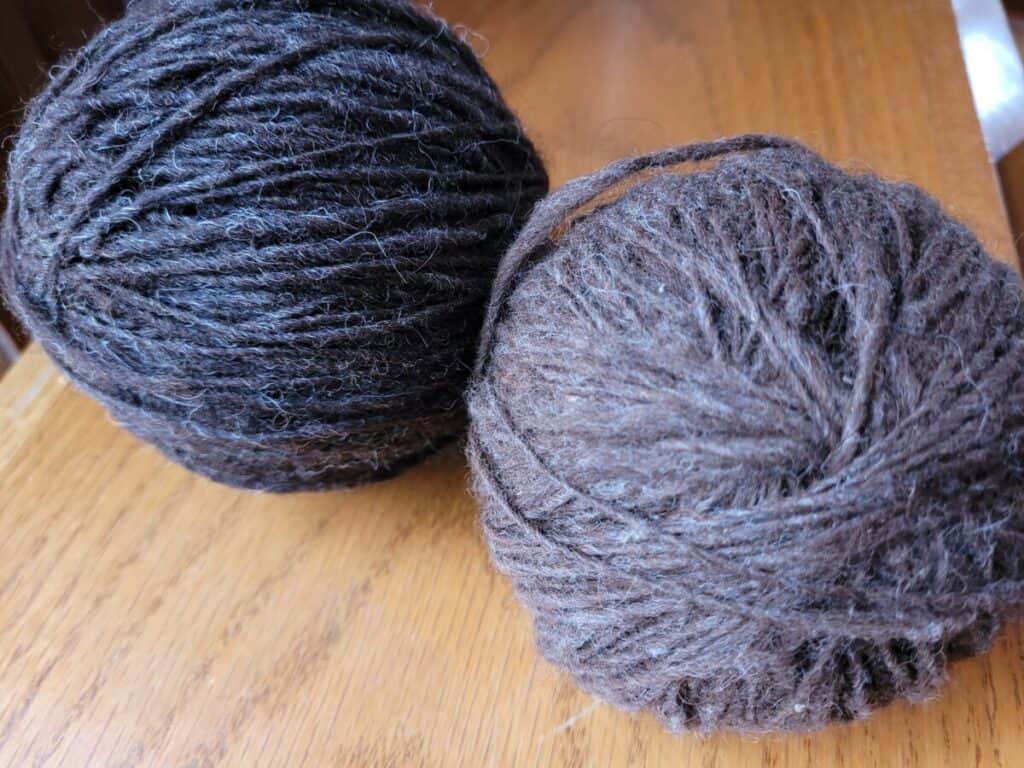
Zwartbles is easy to spin
This is a fun fiber to work with, I love the look of the sheep so I decided to include Zwartbles in my fiber order. I’m glad I did, it spins great, very beginner friendly!
If you are working with color, Zwartbles is more of a brown than a black.
Falkland is shiny and soft
Falkland was a expand my abilities choice, more of a wild card wool for me, but I thought why not give it a shot? Best decision I’ve made so far with the new to me wools!
I have not done much spinning with this fine of a wool, but wow, is it nice! I was like spinning embroidery floss, but without the slip! Wonderful stuff!
The yarn is super soft with a surprising amount of bounce back. So far Falkland is my run away favorite of this order!
If you are on the fence about Falkland, get some, you’ll be glad you did. Wow, it’s great wool!
Once again, probably not the best wool for a beginner, but definitely one to try once you feel like expanding your skills.
Looking for a great resource on which fiber to pick and how best to use it? Consider getting The Fleece And Fiber Sourcebook, filled with wonderful pictures and details on just about any wool you can find.
Merino for advanced beginners
Merino is a wonderful wool, but is probably not the best choice for completely new beginners.
Is Merino Hard To Spin? goes into the pros and cons of working with Merino.
I am hesitant to admit to the terrible things I did to a bag of superfine Merino that I bought a few years ago at the Great Lakes Sheep And Fiber Show And Sale.
But to demonstrate why I do not think Merino is best for beginners, I will.
The Merino I bought was a beautiful chocolate brown and it called to me. I still remember buying it and how excited I was to up my game and start spinning some really super nice wool.
Sadly, all I ended up doing was making tiny twine like yarn. I just couldn’t get it right and was super frustrated!
To be fair to my less experienced self, I didn’t have the internet then, so being online would have helped me through this.
But, as it was, I definitely crashed and burned on a wonderful fiber that I just couldn’t figure out how to spin.
5 Characteristics that make wool easy to spin
The combination of characteristics in the wool are what make it easy or not so easy to spin and work with.
I put this separately because some wools are tough to spin, but easy to knit and sometimes the opposite, as well.
100+ Breeds Of Sheep gives you an extensive list of sheep breeds with suggestions of how to use the fiber.
Since we are focused on the spinning aspect here, we’ll stick with wools that tend to be easy for the beginning spinner or the spinner with little experience to work with.
The 5 characteristics that make a wool easy to spin are:
- staple length of 3-5 inches
- being a medium wool, not fine or long
- clean fiber, no VM (vegetable matter)
- fiber prepared into roving or top
- wool has some crimp
Staple length is the length of the fiber, between 3-5 inches is ideal. Shorter than this or longer than this both will be harder to work with for a beginner.
Medium wool means the micron count of the wool is from 23-30. This is wool that is normally used for things like hats or mittens.
Clean fiber means that the wool is washed and free of contaminants like VM.
Prepared fiber, preferably roving or top, is going to be the easiest fiber for you to work with since all it needs is drafted (pulled out) to be spun.
Wool crimp refers to the kinks in the fiber of wool that make it bind together. Wool that has some crimp to it will grab a bit as you spin, which helps you keep ahold of the wool.
Wool without much crimp, mainly the long wools with a high level of luster, are very beautiful but also slippery and hard to work with for a new spinner.
Some wools are not easy for beginning spinners
Not all wools are beginner friendly, even some of the fairly famous ones like Merino or Angora.
For a more extensive list, read Hard To Spin Wool, in which I list out a more detailed list of things that make a specific wool hard for a beginner to work with.
Don’t get me wrong, I love Merino, it such a wonderful soft wool, but it is not the best place for beginners to start.
Angora is in a category of it’s own with that beautiful halo, but it’s a tough one for beginners, as well.
Some characteristics that make a wool more challenging to spin are:
- very fine
- slick
- very long
- very short
- very coarse
- high amount of grease
- very dirty
Please notice that easy to spin and soft do not always go together. Actually, when you get into the really soft fiber, most are a bit more difficult to spin.
Some of the softest wools are also the most challenging to spin, like superfine Merino or Angora, as mentioned above.
The preparation of the wool can help it be easier to spin, things like buying roving instead of fleeces will help make a wool more manageable to work with.
How To Get Started Spinning is a nice article from The Woolery, giving a list of basics that you’ll need with a variety of tutorial videos.

